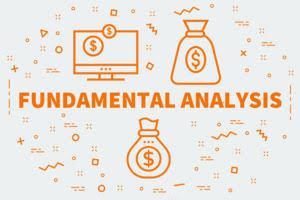
CapEx (Capital expenditure) refers to investments to a business long term. OpEx (operating expenses) refer to the everyday expenses a business incurs capex meaning throughout standard operation. Again, capital expenditures refer to long-term investments related to your business over a multi-year timeline.
Let’s now talk about a few highlights from the quarter from a product innovation and advertising performance perspective. First, it bears repeating that AI innovation across our ads ecosystem is core to every aspect of our product portfolio, from targeting, bidding, creative, measurement, and across campaign types. As advances accelerate in our underlying AI models, our ability to help businesses find users at speed and scale and drive ROI just keeps getting better. We’re especially excited about the doors Gen AI’s opening for creative capabilities, helping deliver on the premise of getting the right ad to the right user in the right moment. We’ve been really focused on simplifying our structures to help us move faster.
Example of How to Use CapEx
For example, if a company purchases a $1 million piece of equipment with a useful life of 10 years, it could include $100,000 of depreciation expense each year for 10 years. This depreciation would reduce the company’s pre-tax income by $100,000 annually, thereby reducing its income taxes. Apple’s balance sheet aggregates all property, plant, and equipment into a single line. However, more information on property, plant, and equipment is often required to be reported within the notes to the financial statements. In this case, this supplementary information explains that Apple has a gross PPE of $114.6 billion, with $78.3 billion made up of machinery, equipment, and internal-use software.
Positive Capex on a balance sheet indicates that money is coming into a company from sales of existing capital assets. Potential investors might see this as an indication that management lacks confidence in the future of the business. It can also be a sign that a company is not spending enough to maintain current operations and drive growth. In bookkeeping and preparation of financial statements, costs incurred through capital expenditures are not deducted in the period they were incurred. Tangible assets are depreciated, and intangible assets are amortized over time, which means that the cost is spread out in different financial periods.
Cash flow statement: Analyzing cash flow from investing activities
On the balance sheet, locate the current period’s property, plant, and equipment line-item balance. On the cash flow statement, it is important to understand that negative numbers indicate money leaving the firm (i.e., capital outlay). This could suggest an aggressive plan for future expansion, a major project, or a major upgrade in newer technologies. Spending on investment activities, while negative on the cash flow statement as a capital outlay, can be positive indicators of a firm’s potential for future growth.
Leasing is an option as well, one that becomes appealing if a company is purchasing assets such as computers or other technology equipment—items that can quickly become obsolete. For one thing, capital budgeting involves very large expenditures, and it is management that must make the evaluation as to whether the investment in assets is worth the cost. Capital expenses almost always impact operational expenses as purchased items need to be maintained and the “big picture” needs to be considered. Once the input from different departments has been assessed, a budget decided based on need and business growth, and capital expenditures completed, it’s imperative a company determine the returns on their capital expenditure. This will allow them to determine if their valuations were correct, whether or not the investments are paying off, what went right and what went wrong, so during the next capex cycle, these decisions are continued or improved. While capital expenditures must be capitalized per accrual accounting standards, operating expenses are recognized straight away in the current period.
The Difference Between Capital Expenditures and Operating Expenses
For example, a plastic manufacturing plant may purchase property and infrastructure to expand its business capacity. All the expenses related to buying the property, buildings, equipment, and machinery would be capital expenditures. Some of the typical examples of capital expenditures include buying machinery and equipment, acquiring intellectual properties assets like patents, purchase of land, and costs involved in building organizational premises. Some of the investments incurred through capital expenditure include the purchase of machinery, equipment, properties or upgrade of the current apparatus. It is important to highlight that all assets bought under capital expenditure depreciate with time. In terms of accounting, an expense is considered to be CapEx when the asset is a newly purchased capital asset or an investment that has a life of more than one year or improves the useful life of an existing capital asset.

Part of this includes them connecting Google Cloud’s latest hardware and data technologies across restaurants globally and starting to apply Gen AI to enhance its customer and employee experiences. At Google Cloud Next, we announced a new collaboration that will redefine marketing through the integration of our Gemini models with WPP Open. WPP’s AI-powered marketing operating system already used by more than 35,000 of its people and adopted by key clients, including the Coca -Cola company, L ‘Oreal, and Nestle.
In most cases, managing your expenses is a simple process since the majority of expenses incurred by small businesses usually consist of overhead expenses such as rent, office supplies, postage, and salaries. There are daily living expenses (like rent, groceries, and car insurance) that address our current needs and current objectives to live and work daily. We also have long term needs and objectives (like purchasing or renovating a home, purchasing a car etc.) that allow us to build necessary resources to grow and progress. Once those two metrics are filled out for the entire forecast, they can be added together for the total capital expenditures for each year. In periods of economic expansion, the percentage of growth capex also tends to increase across most industries (and the reverse is true during periods of economic contraction). As a company reaches maturity and the growth rate slows down to a sustainable rate (i.e., the company can grow at this rate perpetually), the ratio between depreciation and capex should converge towards 100%.